As Diwali approached this year and I bought a pack of mitti diyas from a local shop in Hyderabad, the familiar earthy smell of raw clay nudged my olfactory organ and made me time travel. It wasn’t just the aroma of terracotta, it was the musty scent of time, and uncoiling of memories tethered to that. A wave of nostalgia filled the milieu around me as I held the diya in the cup of my palms, holding the diya tight, as if a tight clutch could bring back the bygone.
Suddenly, I wasn’t in a bustling city gasping for breath far from home. Instead, I found myself swaddled with the pashmina warmth of my hometown in Bihar, squatting in front of a heap of mitti diyas in our local market, inhaling the earthy smell, while the old lady, Geeta Daadi who sold them smiled at me like she always did.
She sat there at the same spot every year before Diwali. A frail, yet strong woman in her 60s, her hands wrinkled with time, dusting the diyas with the corner of her printed cotton saree ,and her eyes had a silence that seemed more eloquent than the echo of words. That’s how I remember her. I’d visit her every Diwali with my house help, and every time, without fail, she would give me two extra diyas, saying, “Le lo beta, do jyada le lo.” And in retrospect I realize she didn’t merely sell diyas, she shared a lifelong connection, leaving an eternal mark on the minds of children like me. She became a part of our Diwali, a filigree of ritual. 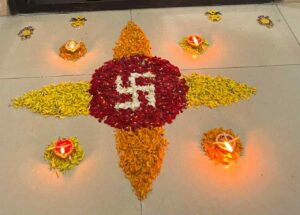
By her side, her young granddaughter would sit quietly, almost my age, her curly bronze hair braided into two neat plaits, soaking in the world with wide, curious eyes. During one of my visits, I don’t remember the year clearly, I had brought along my toy camera, a plastic spectacle my grandmother had bought from the Durga Puja mela. When you pressed the button, colourful rotating photos appeared on a plastic screen like a kaleidoscope. The girl was fascinated by the wonder. She touched it gently, asked what it was, and finally said hesitantly, “Kitne ka liya hai?” I remember smiling and placing it in her hand. “Tumhare liye gift hai, rakho” and I handed it to her. She looked at me with pure wonderment, as though I had handed her the moon freshly plucked from the sky. I can never forget the sparkle in her eyes.
Back home, Diwali was always more than a festival. It was an emotion. Days before, we would begin our preparations. The diyas we bought were washed in aluminium buckets, then laid out to dry in the sun. The neat rows of little mitti diyas looked like an army of red ants. The ritual of drying them, and later, filling them with mustard oil and inserting wicks, was a sacred ritual that always enthralled me. We didn’t need fancy candles and LED lights, those hundreds of mitti diyas, glowing gently like sparkling garlands across the veranda, windowsills, doorframe, and terrace, brought more beauty than electricity ever could.
Crackers were bought from the temporary stalls near our house. They were kept in the sunlight to soak in the warmth. However, crackers never fascinated me. I found the loudness grating, and my asthmatic lungs cringed from the smell of gunpowder. But there was one I loved… the snake cracker. It came in a tiny packet akin to a matchbox. It looked like a black disc that, when lit, unfurled into a long, curling ash serpent. It seemed as though something magical was being born from the earth. I’d sit cross-legged and watch, completely mesmerised, as it slowly took shape, growing slowly into the shape of a serpent. I wish I could find them somewhere now.
Evenings were always soaked in effervescence. Our neighbours and relatives would drop in to do pranam to the elders, exchange sweets and gifts, and would catch up on stories. The kitchen would be a jugalbandi of aromas. Perikia, gujiya, nimki, kaju katli, and homemade laddoos. My favourite part was our visit to the Kali temple late at night. There, among the soft chant of mantras, the smell of incense, and the rhythmic beat of dhaak, I felt something sacred… something deeper and more potent than mere celebration.
And then, came the morning after.
The joy always turned into melancholy. The streets would be littered with burnt crackers, plastic wastes, and the acrid smell of smoke. Even as a child, I felt a strange gloom. The polarity between the glowing night and the grey, polluted morning always made me question…why so much pollution? Noise ? Why celebrate by destroying our beautiful nature?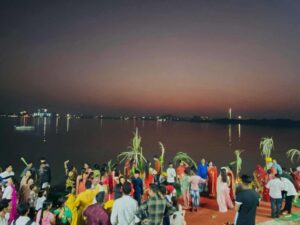
That question never left me.
Soon after, though, came Chhath Puja, a festival close to my heart, a festival synonymous with the identity of Bihar.
Where Diwali brought light, Chhath taught devotion , spiritual commitment, and reverence. Preparations would begin days in advance. The cleaning of the house, purifying the courtyard by smearing it with cow dung. And then the preparation of thekua and kharna, and the collection of banana stalks, sugarcane, gagar phal, and other fruits. Everything was laid out in colourful bamboo soops, arranged aesthetically.
But what made Chhath more special was those Chhat songs. Those melodies by Sharada Sinha from the speakers and we would murmer the lyrics in our minds. Women would sing Maithili Chhathi maiyya songs in unison, passed down over generations. They weren’t just devotional, they were living memory, embedded in the umbilical of Bihar . The lyrics would echo in the air like incense smoke swirling into the air.
On the main evening, Sandhya arghya, we would walk to the riverbank, dressed for the occasion. The banks were decorated with banana trees, colourful rangolis were made, and diyas floating in water looked like sparkling stars. The women, fasting for hours without water, would step into the river, their sarees clinging to their bodies. They offered prayers to the setting sun, singing softly, holding bamboo soops in their hands. Their faces looked serene, orange bridge of sindoor adorned the tip of their nose to the crown of their hairline. It made them look so beautiful, that as a child, I secretly wished to anoint my forehead and hair-parting with that bright orange vermillion. On one such occasion when I asked my aunt to put sindoor on my head too, she educated me the significance and that, it was meant only for married women. Then, she adorned my forehead with a dot of bindi, perhaps to pacify me.
Before dawn the next day, we’d return to offer morning arghya to the rising sun. That moment, the first rays hitting the water looked fascinating. The exuberance of the river, each ripple carrying with it stories from generations, and the women standing in silence, their eyes closed, lips murmuring prayers and mantras, was a sight to behold. It was not just a ritual. It was reverence made visible.
Chhath taught me devotion in its purest form, sans any superficial grandeur. It offered without asking.
This year, though, there was no river. No temple visit. No old woman selling diyas. I was in Hyderabad, celebrating Diwali alone with my two children. Yes, we lit diyas. We made colourful rangoli, played music, burst crackers, ate sweets but something was amiss.
I missed the clay in my hands, the feel of soil under my feet, the songs in the air, the warmth of familiar faces. The absence of those details was cacophonous.
And it dawned on me that festivals aren’t really about the rituals and celebrations. They’re about people that matter to us.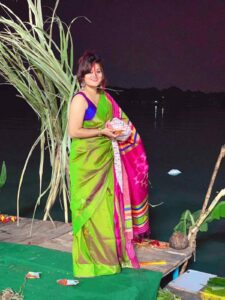
It’s not the diya that makes it special, but the wrinkled hand that gave you two extra.
Not the delicious thekua, but the person who fries it and gives the first one to you to taste, while humming Maithili songs. Not the crackers or the gifts, but the moments and memories shared.
In this fast-moving world, we may live in different cities, even different countries. But what stays are the memories, the stories, the way we felt at a particular moment, the smell of mitti, the sound of Chhath geet reverberating in the air, the priceless joy of receiving a simple plastic toy camera, the serene smile of a less privileged girl when you gift her something. These are the moments that linger forever.
And so, I try to recreate that for my children. Not the rituals alone, but the stories, and the emotions behind them. I hope these experiences become a part of their growing up. So that one day, when life takes them far from home, a familiar song, a nostalgic aroma, a gentle reassurance, a tender warmth, or the memory of a festival night will bring them back. Back to apne log, to belonging, to us, to Home.
*

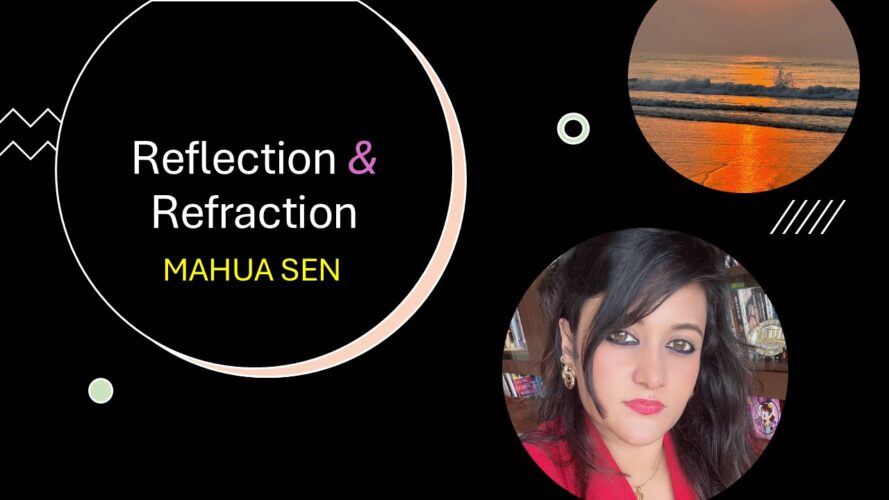


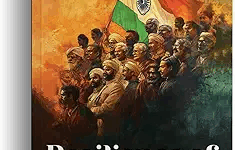




Add comment